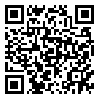Volume 21, Issue 61 (6-2021)
jgs 2021, 21(61): 351-369 |
Back to browse issues page
Download citation:
BibTeX | RIS | EndNote | Medlars | ProCite | Reference Manager | RefWorks
Send citation to:



BibTeX | RIS | EndNote | Medlars | ProCite | Reference Manager | RefWorks
Send citation to:
salehi H, motamedi M, mafi E. (2021). Validation of summer temperature interpolation methods in northeastern Iran. jgs. 21(61), : 19 doi:10.52547/jgs.21.61.351
URL: http://jgs.khu.ac.ir/article-1-3870-en.html
URL: http://jgs.khu.ac.ir/article-1-3870-en.html
1- PhD student in Geography and Urban Planning, Azad University, Shirvan Branch, Iran., Azad University
2- Assistant Professor, Department of Geography and Urban Planning, Shirvan Azad University, Iran., Azad University ,motamedi45@gmail.com
3- Associate Professor, Department of Geography and Urban Planning, Shirvan Azad University, Iran., Azad University
2- Assistant Professor, Department of Geography and Urban Planning, Shirvan Azad University, Iran., Azad University ,
3- Associate Professor, Department of Geography and Urban Planning, Shirvan Azad University, Iran., Azad University
Abstract: (5163 Views)
The basis of climatic data is measurements taken at a predetermined chronological order at air monitoring stations, so all measured values of climatic elements can only be attributed to the point of measurement. Therefore, different interpolation methods can help a lot in estimating climate data in different places. The study area in this study is northeastern Iran, including the provinces of Khorasan Razavi and North Khorasan, and monthly summer temperature data were used for 21 synoptic and evaporative stations in the northeast belonging to the Meteorological Organization and the Ministry of Energy with appropriate distribution. The statistical period of 21 years (1997-1997) was considered as a common statistical period for all stations. Then, in order to compare the interpolation methods, several different methods, including ordinary kriging, spline, inverse squares and Thyssen were used by ARCGIS software. Comparing the deviations of the estimates from the measured data was evaluated by cross-validation. Then, in order to check the hypothesis of normality of the calculated errors in each interpolation method, the test thigh test was used and finally, to evaluate the best interpolation method, AHP method and Expert Choice software were used. The results showed that based on the root mean square error (RMSE) criterion, Thyssen, Kriging, inverse distance and spline methods were located, respectively. Based on the absolute maximum error criterion (MAE), the kriging method estimates the summer temperature better than other methods. According to the MBE standard, the kriging method is better than other methods and can be used for temperature interpolation. According to the set coefficients, the calculated compatibility rate is 0.03, which indicates the high accuracy of the selection of weights.
Article number: 19
Type of Study: Research |
Subject:
Geography and Urban Planning
Send email to the article author
| Rights and permissions | |
 |
This work is licensed under a Creative Commons Attribution-NonCommercial 4.0 International License. |

This work is licensed under a Creative Commons — Attribution-NonCommercial 4.0 International (CC BY-NC 4.0)






